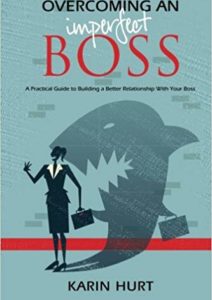Courageous culture is a company culture in which employees feel empowered to speak up their ideas and opinions. Hence, in this Expert Insight Interview, Karin Hurt discusses how to build a courageous culture within the organization. Karin Hurt is the CEO of Let’s Grow Leaders, a global leadership development program, as well as an award-winning author and Top 100 leadership speaker.
This Expert Insight Interview explores:
- The steps of transitioning to a courageous culture
- The infrastructure for the courage
Transition to Courageous Culture
The studies show that if employees would share their ideas with their leaders, they would mostly be about improving customer and employee experiences and increasing productivity in business processes. However, the reasons why employees do not speak up and share their ideas with their leaders are because no one asks them, they are scared to, or they think that speaking up will not change anything. So, the leaders are the ones who should navigate and encourage the narrative within the team. And even the most encouraging leaders should know that sometimes people have so many scars from the past that it takes a lot of time and effort for them to feel ready to speak up again. Still, hopes and fears are important topics to talk about within the team to understand each other and to create a feeling of being together in something.
The next step is complete clarity in showing that you want to hear other people’s ideas while making sure that those people understand what a good idea is. The good idea has to be strategically interesting for the company, doable, engaging, and also it has to encourage the next steps. Furthermore, curiosity is the step when you intentionally ask a courageous question. That question has to be specific and vulnerable while requiring only one answer as an opening for a potential dialogue later. And the last step is to give an update to people about what happened with their idea with gratitude and invitation for more ideas, so they feel heard at least.
Infrastructure for Courage
It is crucial for any organization that HR systems and processes work to support the courageous culture. As early as during the onboarding process, the new employees should feel comfortable enough to share their ideas. Also, current employees should not be visible ranked in any way. Moreover, there are so many diverse talents within an organization to recognize. Some people are silent and introverted, while others are loud and extroverted. Thus, using creative ways to encourage everyone to speak up, such as breaking people into smaller groups, is always beneficial.
Our Host
John is the Amazon bestselling author of Winning the Battle for Sales: Lessons on Closing Every Deal from the World’s Greatest Military Victories and Social Upheaval: How to Win at Social Selling. A globally acknowledged Sales & Marketing thought leader, speaker, and strategist, he has conducted over 1500 video interviews of thought leaders for Sales POP! online sales magazine & YouTube Channel and for audio podcast channels where Sales POP! is rated in the top 2% of most popular shows out of 3,320,580 podcasts globally, ranked by Listen Score. He is CSMO at Pipeliner CRM. In his spare time, John is an avid Martial Artist.







Comments